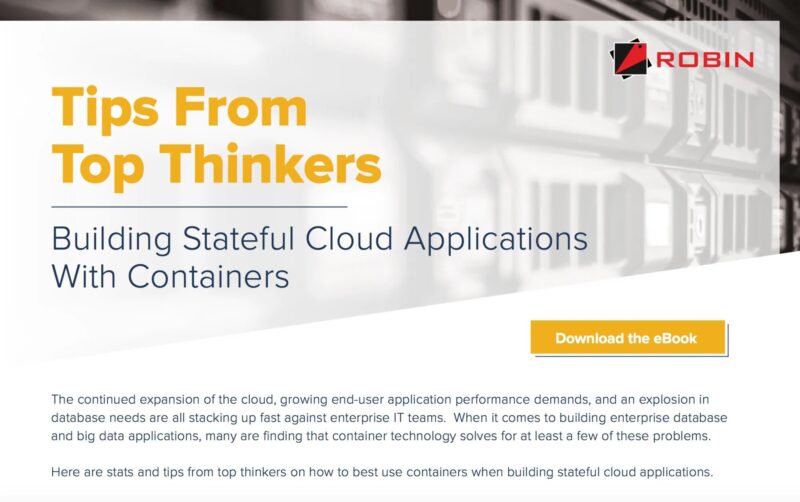Infographic: Building Stateful Cloud Applications With Containers




While some DevOps core practices such as continuous integration (CI), and continuous delivery (CD) significantly improve the release process; they still fall short. Take the fact that entire application snapshots are still required ahead of release, so rollback can be easily performed in case fixes or patches don’t work. Just one example of inefficiency. In addition, entire application clones are required so multiple teams have access to production for debugging, optimization, and more – all without affecting production stability or performance. Snapshots and clones are not typically included in DevOps.
Tips From Top Thinkers
Building Stateful Cloud Applications With Containers
The continued expansion of the cloud, growing end-user application performance demands, and an explosion in database needs are all stacking up fast against enterprise IT teams. When it comes to building enterprise database and big data applications, many are finding that container technology solves for at least a few of these problems. Here are stats and tips from top thinkers on how to best use containers when building stateful cloud applications.
Persistent Storage is a Top Challenge
26% of IT professionals cited “persistent storage” as a top challenge, when it comes to leveraging containers.
Streamline Until It Hurts “Some of the best writers have said they refine their work by cutting till it hurts. Containers are the same way.” Eric Vanderburg Vice President, Cybersecurity | TCDI
Isolate Containers & Hosts “Maintaining isolation between the container and hosts system by separating the file systems is vital towards management of the stateful application.” Craig Brown, PhD Senior Big Data Architect & Data Science Consultant
Select an Intelligent Orchestrator “An intelligent orchestrator along with a softwaredefined storage with software-defined networking is very essential for running a cloud-based application.” Deba Chatterjee Senior Engineering Program Manager | Apple
A Majority of Enterprises are Investing in Containers
69% of IT pros reported their companies are investing in containers 69
Validate All States “What they all (containerized stateful apps) have in common is the requirement to reliably validate all possible states and state transitions when changes are made to the application.” Marc Hornbeek Principal Consultant – Dev Ops | Trace3
Ensure You Can Monitor All Containers “Containerised applications are addictive. They can be created, tested and deployed very quickly when compared to traditional VMs. The infrastructure to begin monitoring a potentially vast and varying number of new containers is essential.” Stephen Thair Co-Founder | DevOpsGuys
Ofset Workloads with Containers “Stateful applications often reside in 1 or 2 geographical locations and take heavy loads … and at diferent times during peak and of-peak periods. Understanding these variables will enable an operations team to determine how to best design the use of container applications.” Steve Brown Director, DevOps Solutions N.A. | Lenovo
Top Container Orchestrators Now More Popular Than DevOps Tools
When choosing a platform, 35% felt Docker was the best fit for them among all DevOps tools
Get Infrastructure Pros Excited “A lot of people focus too much on the fact that “those application guys” are coming to mess with our infrastructure, instead of thinking that maybe we can elevate our own jobs and start working more closely with applications.” Stephen Foskett Proprietor | Foskett Services
Follow Design Microservices Principles “One of the fundamental aspects of containers is moving to immutable application infrastructure, which means that you cannot store state and application in the same container.” JP Morgenthal CTO Application Ser
Don’t Use Containers for Data Storage “When dealing with stateful applications, precautions need to be taken to ensure that you are not compromising or losing data.” Sylvain Kalache Co-Founder | Holberton School
